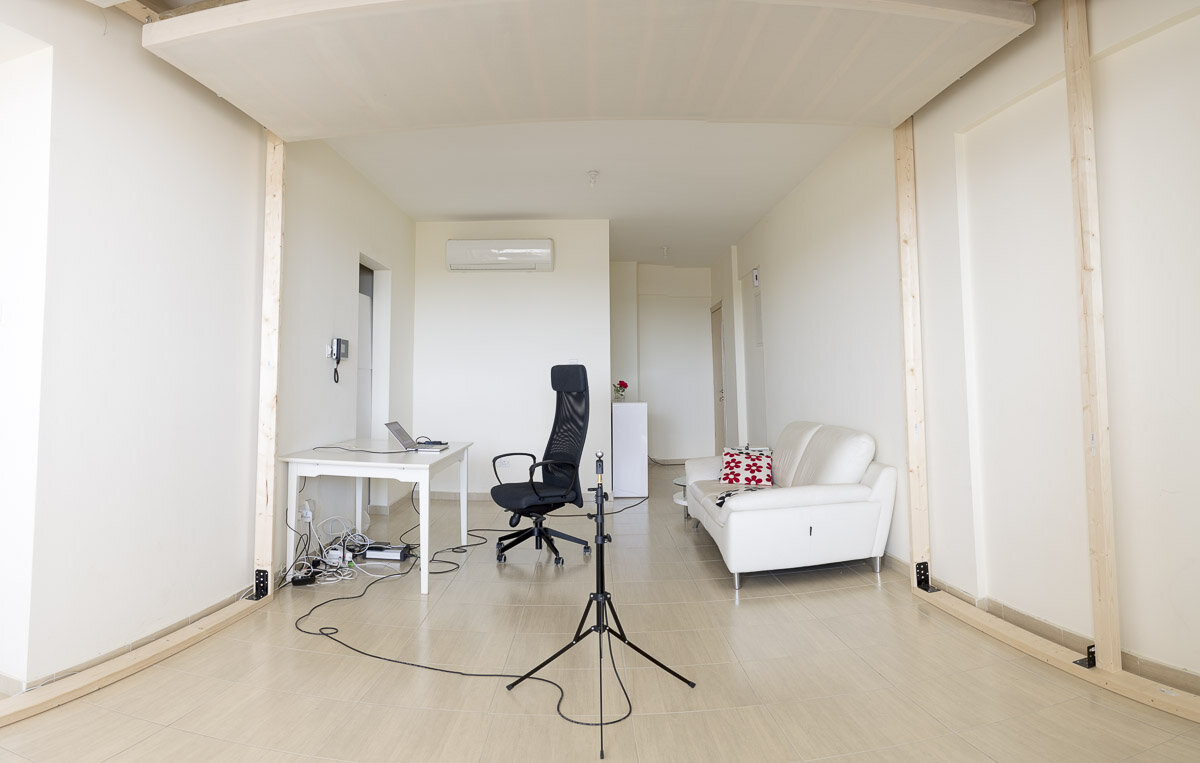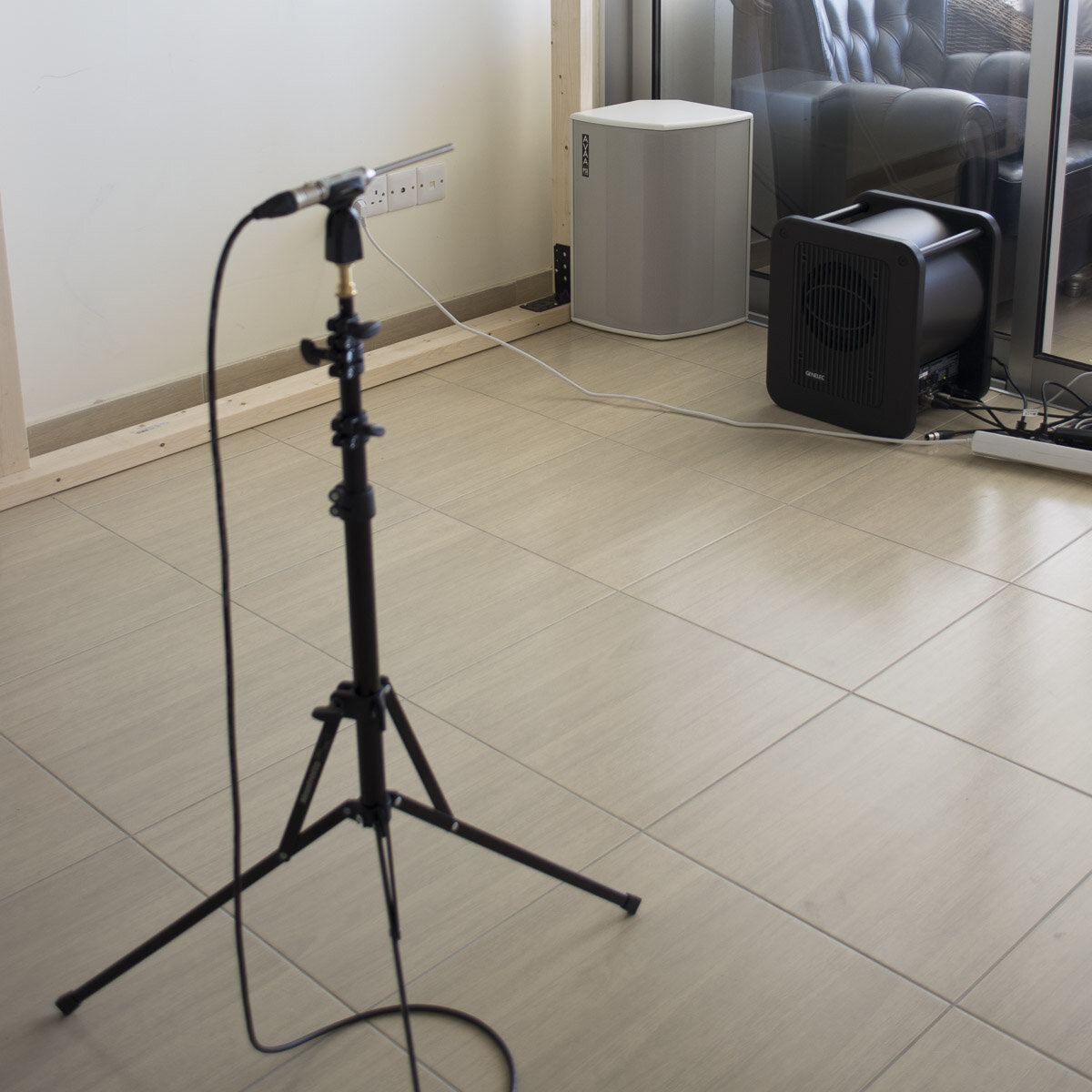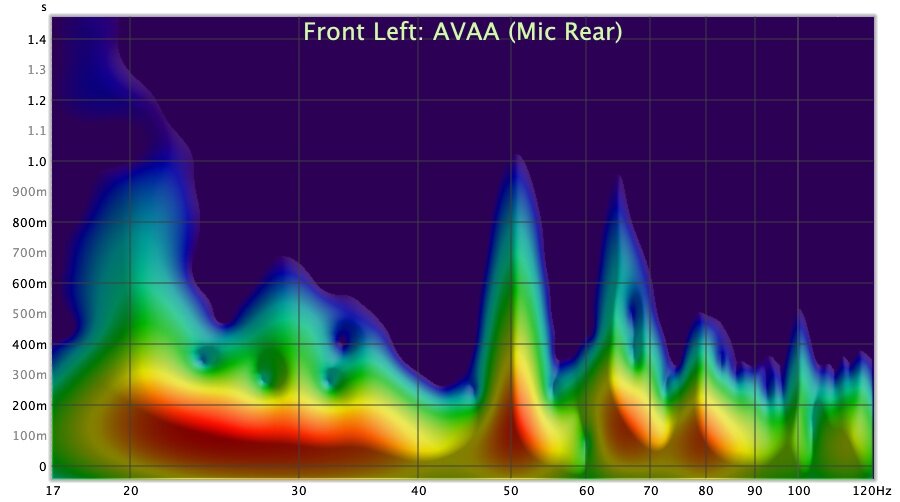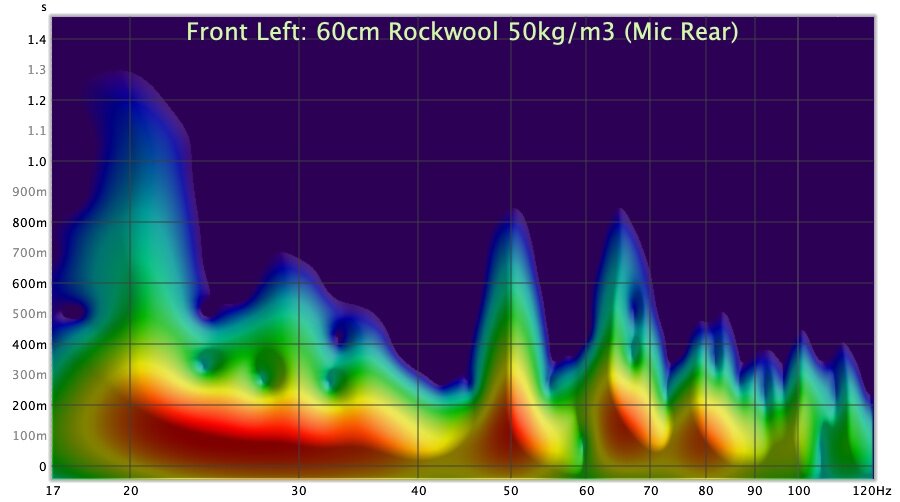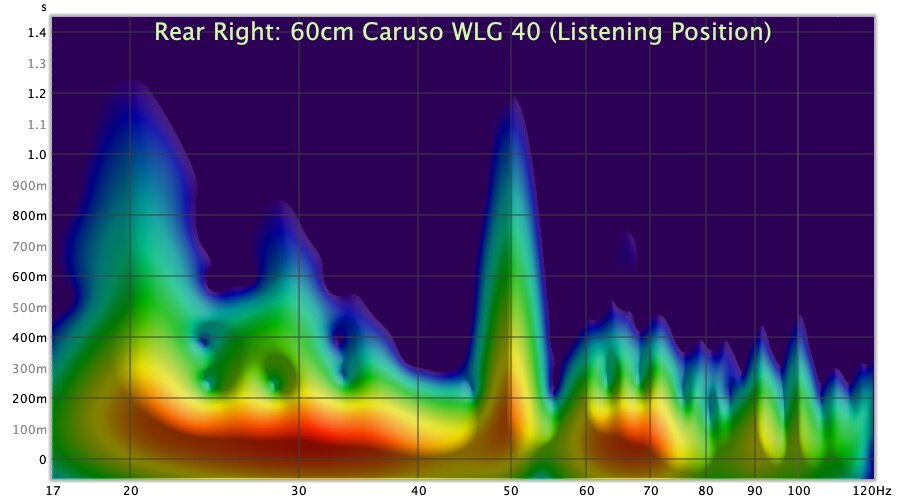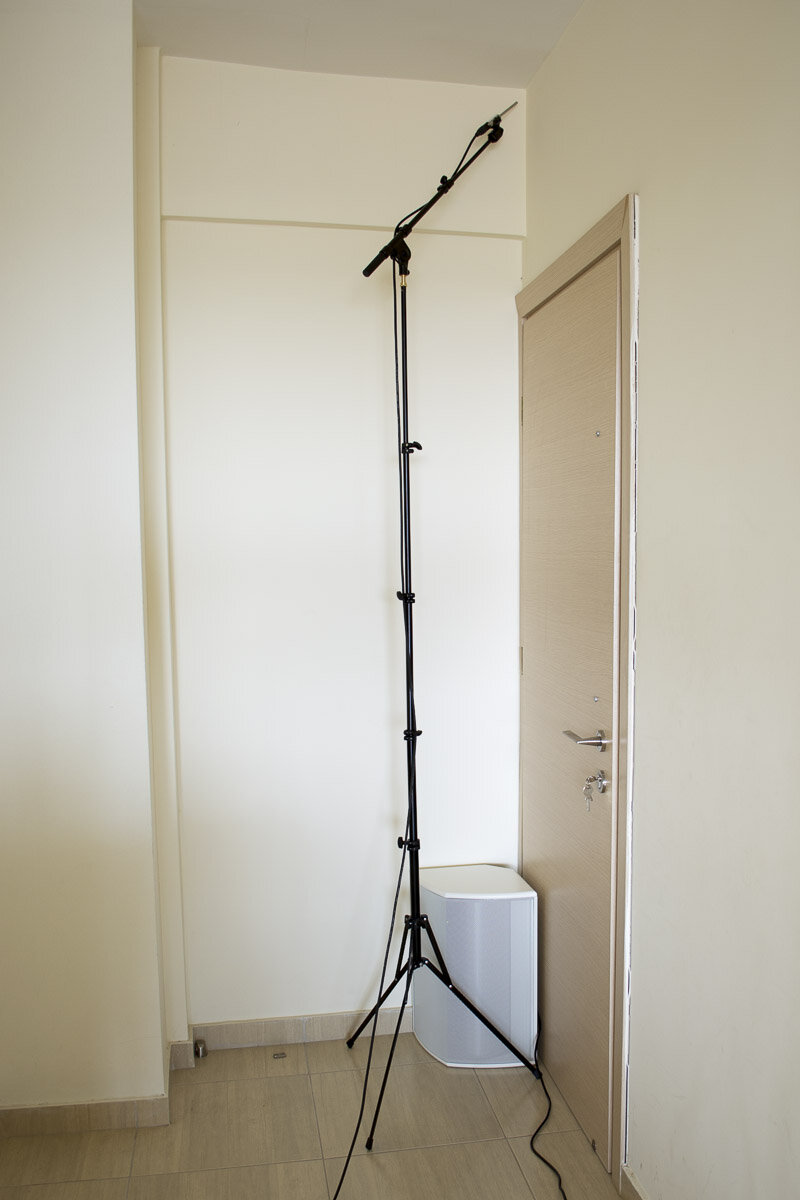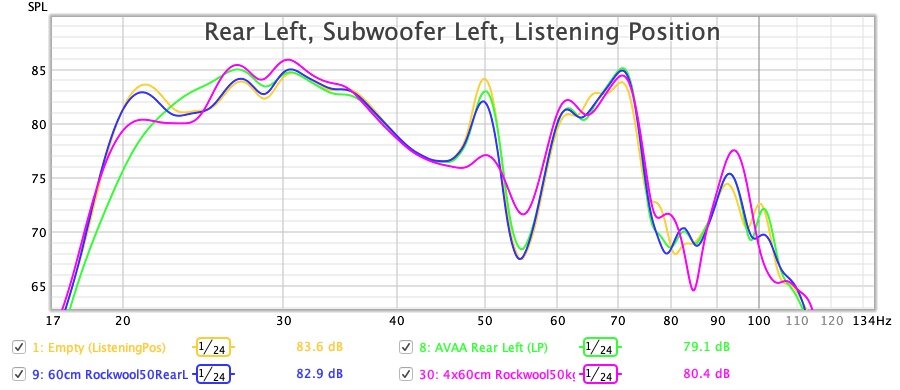Active vs passive absorbers - AVAA C20 review
Wouldn't it be nice if you only had to put a few small boxes in the corners instead of cubic meters of rock wool, and within a few minutes you would have eliminated all room modes? Perfect acoustics at the push of a button?
This is exactly what the AVAA C20 * (Active Velocity Acoustic Absorber) from PSI Audio promises. It looks like a loudspeaker and actually contains one inside. But it does not serve as a sound source in the conventional sense, but aims exclusively at reducing the low-frequency reverberation - more precisely between 15Hz and 150Hz. And with that, it takes on one of the tasks that we usually solve with mineral wool.
Roughly, the topic today is: active vs. passive absorbers.
The AVAA only requires power and is actually ready for use immediately without any configuration or integration into the loudspeaker system. Using the integrated microphone, it receives all the information it needs to generate the appropriate “anti-sound”, which ultimately makes the room modes fade away more quickly. The only setting option is a small potentiometer on the back, which is normally used in the "maximum" position. The intensity of the absorber can only be reduced in very reverberant rooms in order to avoid any problems with feedback.
PSI Audio is professional and reputable enough not to promise anything that it cannot keep. The AVAA is ultimately an absorber with acoustic absorption properties just like mineral wool. The big advantage why the purchase of an active absorber could be worthwhile is the small space requirement. Instead of thick rock wool (and the construction of suitable wooden frames and cladding), the AVAA C20 comes with just 13kg and the dimensions of a medium-sized speaker. Especially in the case of changing work locations, you would need a transporter for a set of absorbers for a mobile control room, while you can comfortably bring a few AVAAs with you in your car.
And the space advantage is directly followed by the advantage of a more subtle look. While in the home cinema and professional recording studio, the sound is usually the top priority and you can make a window disappear completely behind absorbers, the appearance in the living room is often just as important - especially if you share your home with a (non-audiophile) partner!
And this is exactly the reason why I bought an AVAA myself. It is not my intention to completely eliminate passive (porous) absorbers. But I'm fine with any help that improves my room acoustics and at the same time reduces the need amount of mineral wool. For me the sound has high priority, but at the same time I want to try everything so as not to reduce the view from the large window front more than necessary.
If you feel the same and you also want to manage the balancing act between acoustics, space requirements and optics, I would like to give you an orientation today with concrete room acoustic measurements. I know that a single situation cannot necessarily be generalized to any other listening room. But I hope that through my explanations you can at least get an idea of the magnitude of the absorption force of an AVAA.
From my previous blog articles you already know that I have a preference for clear comparisons. In order to be able to record the difference between an active and a passive absorber as precisely as possible, all other parameters should remain unchanged.
For this reason, I set up a small test setup and previously removed all existing absorbers from the room. It seemed sensible to me to relate the different measurements to an empty room and to be able to understand the effect of each absorber.
Only the ceiling cloud was allowed to stay in place at all times. Even if the AVAA delivers what it promises, it will never be able to eliminate the discreet ceiling reflections anyway.
Next to the subwoofer, I already left enough space to be able to set up the various absorbers later without having to change the position of the subwoofer. Incidentally, I use two Genelec 7350 *, which I have left for this test without any equalization in GLM and without a low pass. Since the measurements between the left and right subwoofer hardly differ in terms of mode excitation, I always use the left subwoofer for the measurement diagrams.
My living room is somewhat asymmetrical, so that the hallway to the front door connects directly without an intermediate door. This makes the prediction of the fashions not as easy as in a pure "shoebox". On the other hand, I gain some space in the hallway to place absorbers there.
The exact dimensions are 6.80m x 3.45m x 2.73m (22.3’ x 11.2’ x 9’), the hallway extending the long side again to a total of 10m (32.8’).
As an "opponent" to the active absorber AVAA, I had the following two options for the passive absorber category:
Caruso Iso Bond WLG 40: flow resistivity 5000 Pa*s/m², density 20kg/m³ (1.26 lbs/f³), absorber size 120cm x 62cm x 60cm (4’ x 2’ x 2’)
Rockwool: flow resistivity 14000 Pa*s/m², density 50kg/m³ (3.1 lbs/ft³), absorber size 120cm x 60cm x 60cm (4’ x 2’ x 2’)
But now finally to the measurements::
1st Absorber Position: Front Left
First a word about the diagrams: I used the REW (Room EQ Wizard) software for all measurements and evaluations. I always used a drop of 45dB with the same level for all spectograms.
The differences at 20Hz and 30Hz are almost not noticeable. With good will you can see the AVAA here as a winner. The transition from green to turquoise is around 700ms for all other diagrams and a little under 600ms for the AVAA. But we don't have to take a close look here - the differences at 20Hz will become much more obvious at other locations later.
The differences, however, are clear at 50Hz. The light Caruso Iso Bond can reduce this mode somewhat to about 1.15s (mind you with only one absorber block and half the room height). The AVAA C20 absorbs slightly better and manages 1.0s. The heavy rock wool creates an even better reduction to 0.85s.
The target value for a good listening room is usually in the 0.3s range. It should be clear that with half an edge absorber we cannot perfectly dampen a room of this size. And the AVAA C20 doesn't do miracles here either.
If you are wondering how this affects the frequency response, I would of course not want to withhold it from you:
In the lower range, the difference of a few dB is not worth mentioning. In the pronounced mode at 50Hz, both the heavy rock wool and the AVAA bring about 5dB reduction of the strong increase compared to the empty space. This is definitely an improvement that you can understand not only in terms of measurement technology, but also in terms of hearing.
2nd Absorber Position: Rear Right
I also compared the three candidates and their influence on the low-frequency reverberation in the rear right:
My observations here are quite similar to those before: Not much changes at 20Hz and 30Hz. The AVAA and the heavy rock wool both bring slight improvements.
At 50Hz the differences are clearer again: 60cm Caruso Iso Bond reduces the decay from 1.4s to 1.2s, the AVAA to 1.1s and 60cm rockwool 50kg/m³ to 1.05s.
Since the changes in the reverberation times are not great, there is not much change in the frequency response either. One or two dB here and there, but ultimately the influence on room modes seems to be less in this corner compared to the other corners.
Up to this point you could think that the AVAA does not change that much. Fortunately, I tried a third, very interesting position:
3rd Absorber Position: Rear Left
Due to the low absorption power of the light Caruso Iso Bond for the lower modes and the lack of additional Caruso absorber plates, this last comparison takes place exclusively between AVAA and the 50kg rock wool.
As before, I had a rock wool package of 60cm thickness compete against the AVAA. Here the AVAA really surprised me for the first time. Because the range around 20Hz was suddenly completely silent after 400ms instead of almost a second in empty space!
It may seem obvious that this back corner is predestined for the absorption of the longest mode. Because the back wall only has a full length of 10m over half the width. Accordingly, the energy of this lower mode bundles like a funnel in the rear corner.
However, based on previous attempts, I would have expected that the rock wool could also play a part here. In this case, however, there is a huge difference in the absorption properties.
After this result I was followed by the question: how many packages of rock wool would I have to open in order to achieve a similar absorption as the AVAA? Since I still had some absorbers available, I evenly covered the entire wall with 40-60cm rock wool.
But even four times the amount could not dampen the 20Hz mode much shorter than 600ms. However, it was impressive to see how the mode disappeared at 50Hz.
The frequency response shows something similar. At 20Hz you can see a clear difference here. While the AVAA runs very smoothly at low frequencies, all other curves at 20Hz still have a more or less strong increase due to the room mode.
At 50Hz, on the other hand, even a single 60cm packet of rock wool with the 50kg/m³ density is already at the level of the AVAA. And every additional package extends the lead even further.
Advantages of the AVAA C20
It was very instructive for me to start again with an almost empty room and try out the AVAA in different positions. I had the feeling that it contributed something positive for the room acoustics in every position. The effectiveness is very dependent on the position in the room.
So it would be an exaggeration to say that you simply place an active absorber "somewhere" and it works miracles immediately. Due to the price of the AVAA, you will certainly want to buy as few copies as possible. And accordingly, in my view, there is no way around looking closely at the absorption properties at the various positions in the respective room using measuring software and then deciding on the best locations.
If you have found one or more good positions, the AVAA can do little "miracles" in the lower frequency range! While the porous absorbers of the appropriate size can play along at 50Hz and above, I have not managed to achieve the absorption of the AVAA even with 2 cubic meters of rock wool at my 20Hz mode.
For comparable absorption properties, a thickness of over one meter will have to be built up. Alternatively, Helmholtz absorbers, tuned to this lower octave, would be able to dampen these frequencies with less space. However, all of this requires a design effort that is anything but quick and uncomplicated to implement.
For room modes below 50Hz, the AVAA seems to be the secret weapon for me. And the price of around 2000 EUR can be absolutely right if you calculate the amount of material and, above all, the time that has to be spent on the construction of comparable absorbers. In some control rooms, there is simply not enough space to accommodate a 60cm (2’) or even 1m (3.5’) bass absorber. And if you work remotely from time to time and want to transport your absorbers, the AVAA is unrivaled.
And as mentioned at the beginning, there may also be situations in which money plays a subordinate role, but the optics do. If an edge absorber in the size of 60cm x 60cm is not to be used, PSI Audio offers a good alternative. The absorption properties were not better than cheap stone wool for room modes above 50Hz, but on the other hand, an AVAA does not take up space and is absolutely suitable for the living room from both a visual and hygienic point of view.
Disadvantages of the AVAA C20
Technically, the AVAA has no disadvantages in my eyes. While the 20Hz mode was surprisingly effectively eliminated by just one AVAA, the absorption effect for the higher modes was no better than a normal rock wool edge absorber.
Between 2 and 4 AVAAs are necessary for most normal size rooms (20 and 80 m2)
As is not only indicated in my measurements, but also on the homepage of the manufacturer PSI Audio, it should be clear to everyone that you cannot achieve a studio standard with a single AVAA C20 in an untreated room.
If money didn't matter, I would prefer to distribute four or six of the AVAAs in my living room instead of one, and the room modes would probably be under control. And the next time I move, I'll put the six active absorbers in the trunk and after 30 minutes of assembly time I'll be back in the same place in the next apartment!
But at a price of 2000 EUR you will probably think very carefully whether it is worth it. Because there is not much that cannot be solved with cheap rock wool. The often used rock wool with a density of 20kg / m³ (I had used Caruso Iso Bond with the same density) was inferior to the AVAA at lower room modes in my experiment. But if you use the entire room height of 2.40m instead of a height of 1.20m, the rock wool from 50Hz on should again be comparable. And depending on the wooden construction and the quality of the fabric covering, such an edge absorber (also called superchunk or bass trap) can be built for less than 200 EUR.
So if the budget is tight and you bring some time and craftsmanship, then every solution with conventional rock wool brings more acoustic improvement at the same price. If rock wool was not suitable for use in the living room for health or hygienic reasons (which I can understand well in my own experience), you would switch to products such as Caruso Iso Bond and Basotect and would already be at a multiple of the price of the cheap hardware store mineral wool. The difference to an AVAA is not that big anymore, but it is still there.
If there is a corresponding budget for several AVAAs and you do not want to waste time and nerves with the construction of passive absorbers and also value subtle optics, then you are well advised with the AVAA. The AVAA also seems to be the perfect tool for applications such as mobile control rooms or loudspeaker demo rooms.
At this point I would like to mention that the treatment of room modes is only one of the challenges on the way to perfect acoustics. Reflections from the ceiling and walls will not be suppressed with an active absorber. A certain amount of passive absorbers cannot be avoided even when using multiple AVAAs.
For my part, I have now decided to keep the AVAA C20 * and use it for special tasks. After all, I have to be able to walk through my hallway to the front door every day and I won't be able to leave the many absorbers permanently in the position shown. The combination of passive absorbers with an AVAA gets me a big step closer to my goal and forms a good compromise between acoustics and comfort or practicality.
I hope I was able to give you some impulses to clarify what an active absorber like the AVAA can do and whether it could be worthwhile for your situation.
* Affiliate link
Blog article: How to measure room modes with REW (freeware)
Blog article: DIY broadband absorbers





